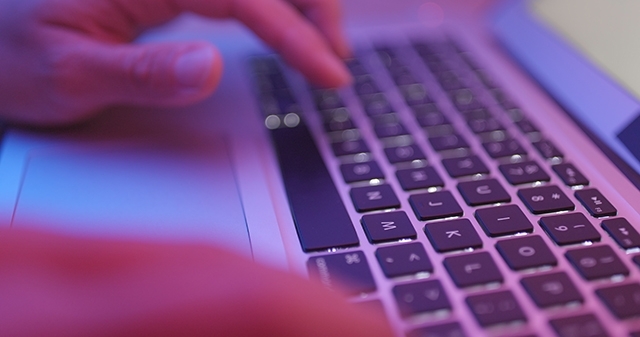A Bunch more Windows and Apple Keyboard Shortcuts

Windows Keyboard Shortcuts (UPDATED)
Win+D: Show or hide the desktop – This keyboard combo minimizes all your open windows, bringing your home screen into view. If you store rows and rows of files and shortcuts on your desktop, Win+D will let you access them in in moments.
Win+left arrow or Win+right arrow: Snap windows – Snapping a window simply opens it on one side of the screen (left or right, depending on which arrow you hit). This allows you to compare two windows side-by-side and keeps your workspace organized.
Win+Tab: Open the Task view – Like Alt+Tab, this shortcut lets you switch apps, but it does so by opening an updated Windows application switcher. The latest version shows thumbnails of all your open programs on the screen.
Tab and Shift+Tab: Move backward and forward through options – When you open a dialog box, these commands move you forward (Tab) or backward (Shift+Tab) through the available options, saving you a click. If you’re dealing with a dialog box that has multiple tabs, hit Ctrl+Tab or Ctrl+Shift+Tab to navigate through them.
Ctrl+Esc: Open the Start menu – If you’re using a keyboard that doesn’t have a Windows key, this shortcut will open the Start menu. Otherwise, a quick tap of the Windows key will do the same thing. From there, you can stay on the keyboard and navigate the Start menu with the cursor keys, Tab, and Shift+Tab.
Advanced Windows Shortcut Tricks:
F2: Rename – Simply highlight a file and hit F2 to give it a new name. This command also lets you edit text in other programs—tap F2 in Microsoft Excel, for example, and you’ll be able to edit the contents of the cell you’re in.
F5: Refresh – While you’re exploring the function key row, take a look at F5. This key will refresh a page—a good trick when you’re using File Explorer or your web browser. After the refresh, you’ll see the latest version of the page you’re viewing.
Win+L: Lock your computer – Keep your computer safe from any prying eyes by using this keyboard combo right before you step away. Win+L locks the machine and returns you to the login screen, so any snoops will need your user account password to regain access.
Win+I: Open Settings – Any time you want to configure the way Windows works, hit this keyboard shortcut to bring up the Settings dialog. Alternatively, use Win+A to open up the Action Center panel, which shows notifications and provides quick access to certain settings.
Win+S: Search Windows – The Windows taskbar has a handy search box that lets you quiz Cortana or sift through your applications and saved files. Jump straight to it with this keyboard shortcut, then type in your search terms.
Win+PrtScn: Save a screenshot – No need to open a dedicated screenshot tool: Win+PrtScn grabs the whole screen and saves it as a PNG file in a Screenshots folder inside your Pictures folder. At the same time, Windows will also copy the image to the clipboard. If you don’t want to snap the whole screen, the Alt+PrtScn combination will take a screenshot of just the active window, but it will only copy this image to the clipboard, so you won’t get a saved file.
Apple Keyboard Shortcuts
Command-X: Cut the selected item and copy it to the Clipboard.
Command-C: Copy the selected item to the Clipboard. This also works for files in the Finder.
Command-V: Paste the contents of the Clipboard into the current document or app. This also works for files in the Finder.
Command-Z: Undo the previous command. You can then press Shift-Command-Z to Redo, reversing the undo command. In some apps, you can undo and redo multiple commands.
Command-A: Select All items.
Command-F: Find items in a document or open a Find window.
Command-G: Find Again: Find the next occurrence of the item previously found. To find the previous occurrence, press Shift-Command-G.
Command-H: Hide the windows of the front app. To view the front app but hide all other apps, press Option-Command-H.
Command-M: Minimise the front window to the Dock. To minimise all windows of the front app, press Option-Command-M.
Command-O: Open the selected item or open a dialogue to select a file to open.
Command-P: Print the current document.
Command-S: Save the current document.
Command-T: Open a new tab.
Command-W: Close the front window. To close all windows of the app, press Option-Command-W. Option-Command-Esc: Force quit an app.
Command-Space bar: Show or hide the Spotlight search field. To perform a Spotlight search from a Finder window, press Command-Option-Space bar. (If you use multiple input sources to type in different languages, these shortcuts change input sources instead of showing Spotlight. Learn how to change a conflicting keyboard shortcut.)
Control-Command-Space bar: Show the Character Viewer, from which you can choose emoji and other symbols.
Control-Command-F: Use the app in full screen, if supported by the app.
Space bar: Use Quick Look to preview the selected item.
Command-Tab: Switch to the next most recently used app among your open apps.
Shift-Command-5: In macOS Mojave or later, take a screenshot or make a screen recording. Or use Shift-Command-3 or Shift-Command-4 for screenshots. Learn more about screenshots.
Shift-Command-N: Create a new folder in the Finder.
Command-Comma (,): Open preferences for the front app.